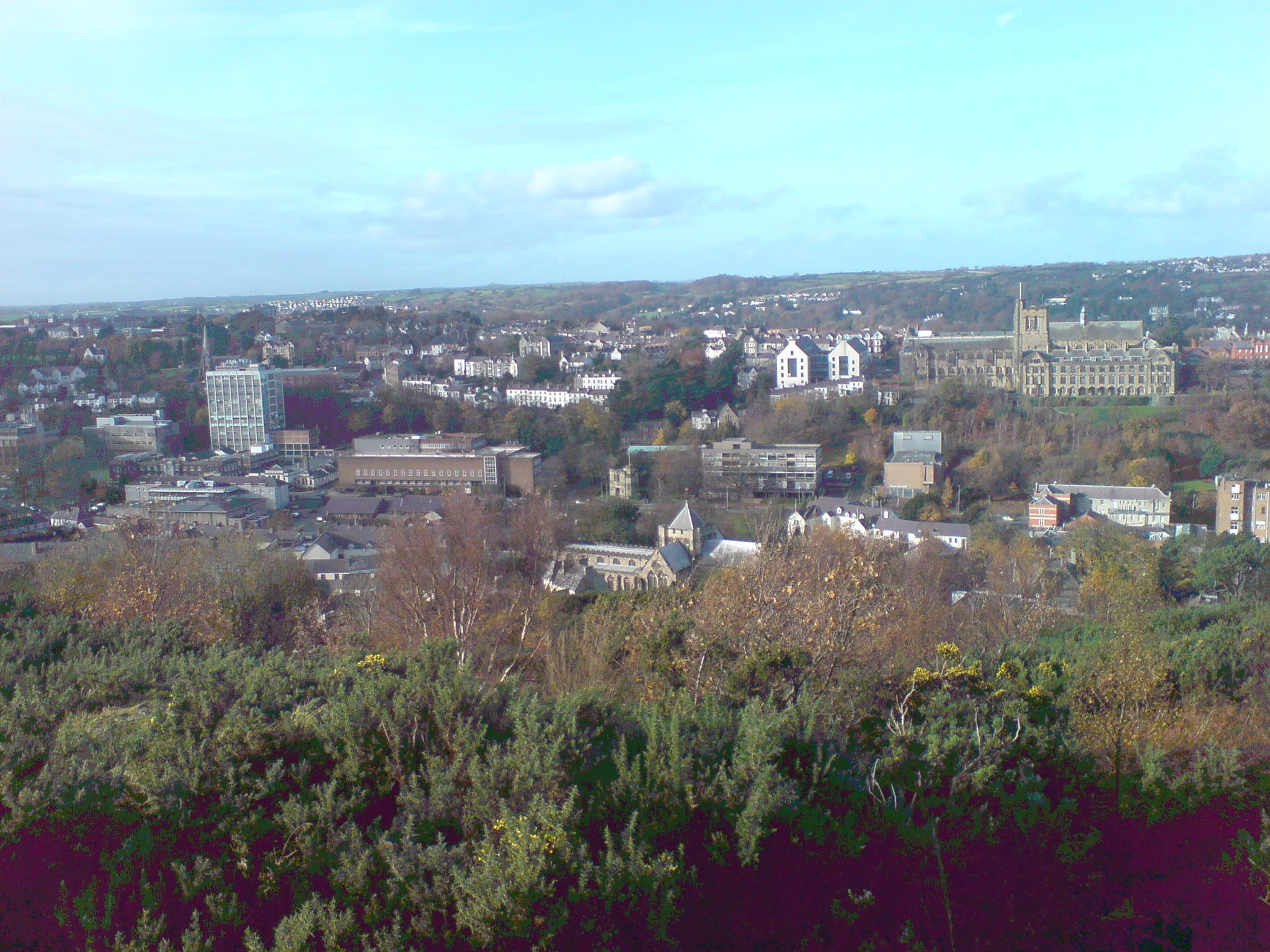A cathedral and university city, Bangor incorporates a wide variety of architectural styles that remind the visitor that this is not only ...
A cathedral and university city, Bangor incorporates a wide variety of architectural styles that remind the visitor that this is not only an interesting and stimulating place, but also one with a long history. A monastic community was founded here as early as AD525 by St Deiniol, and the town’s name is derived from the wattle fence that surrounded the saint’s primitive enclosure – the term ‘bangori’ is still used in parts of Wales to describe the plaiting of twigs in a hedge. However, there were settlers in the area long before St Deiniol, including the Romans at nearby Segontium, and the Gwynedd Museum and Art Gallery is just the place to discover the area’s 2,000 years of history, as well as to see the reconstructions of the domestic life of the past generations.
The art gallery exhibits a range of work by artists from all ages. Close by in Deiniol Street is Theatre Gwynedd. The main church of the oldest bishopric in Britain, Bangor Cathedral dates from the 13th century and has probably been in continuous use for longer than any other cathedral in Britain. During the Middle Ages, the cathedral became a centre of worship for the independent principality of Gwynedd, and the tomb of Owain Gwynedd, buried here after his death,
.became a starting point for pilgrims setting out on the arduous journey to Bardsey Island. Restored in 1866, the cathedral also contains a life-size carving of Christ dating from 1518 while, outside, there is a Biblical garden that contains plants associated with the Bible. Until the slate boom of the 19th century, Bangor remained little more than a village, albeit with an impressive church. Its position on the Menai Strait, which separates Anglesey from the mainland, made this the ideal place for nearby Penrhyn Quarry to build its docks, and the town soon flourished as a commercial centre. Its importance increased further when the University College of North Wales was founded here in 1884.
Improvements in the roads, and then the coming of the railways to the North Wales coast, also saw Bangor grow in both stature and importance. The Menai Suspension Bridge was built by Thomas Telford between 1819 and 1826 and was the first permanent crossing of the Menai Strait.
Before its completion, the crossing was made by ferry, and cattle on their way to and from market would swim the channel. Another deciding factor in building the bridge was the treacherous currents to be found in the strait. The worst accident took place in 1785, when a ship carrying 55 people ran aground on a sandbar. Efforts to refloat it proved fruitless, and when it became swamped with water and keeled over only one person survived. Rocks and reefs called The Swellies just beneath the surface between the two bridges also cause whirlpools.
This was where HMS Conway was lost in 1953. However, there was much local opposition to the construction, not only from the ferrymen but also from shipowners worried that the structure would impede the passage of their tall ships. As a result of this concern, the road bridge stands at a height of 100 feet. The Britannia Bridge, a mile further southwest from Telford’s bridge, is a combined road and rail crossing and was built between 1846 and 1850 by Robert Stephenson. In 1970, a fire meant that it had to be rebuilt. The lions guarding the bridge are by John Thomas, who was responsible for much of the sculpture at the Houses of Parliament. Also jutting out into the Menai Strait from the town is the 1,500-foot long Victoria Pier,
which was built in 1896. As well as being attractive, the pier is a pleasant place from which to view Snowdonia, the coast and the small boats passing by, and to admire the houses, some of them quite magnificent, which stand beside the water. Both pleasure and fishing trips can be taken from the pierhead. Bangor is a major centre of the mussel industry. The town was the birthplace of two singers – Bryn Terfel, the international operatic tenor, and Aled Jones, singer of Walking in the Air. Surprisingly, on the sound track of the film The Snowman, someone else sings the song. To the west of the town and overlooking Beaumaris on the Isle of Anglesey lies Penrhyn Castle (NT), a dramatic neoNorman construction built by Thomas Hopper between 1820 and 1845, and incorporating Doll and Railway Museums.


No comments